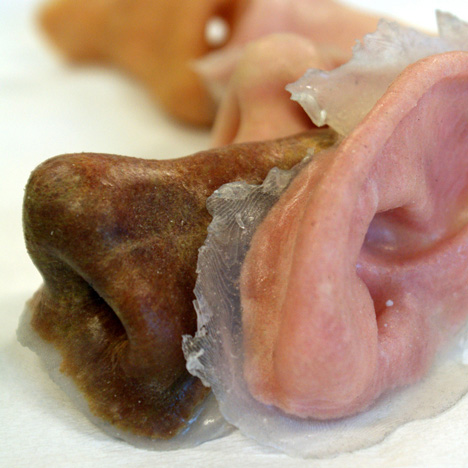
Image via Deezen
English consultancy Fripp Design is revolutionizing the way that prosthetics are manufactured. The company is using new machinery to their advantage, as they combine 3D printing and scanner technology.
Fripp Design’s approach to prosthetics painlessly uses photogrammetry, which takes pictures captured from an array of cameras and combines the end result into an editable CAD model. The files taken are referenced with MRI data and CT scans, to make sure that the prosthetics fit the person perfectly. This data is used by digital sculptors to cross-check a library of 3D-modeled body parts, so repair of the mutilated areas can begin. To make the model seem more realistic, special features like pores and wrinkles are included. Skin color can be customized to fit each individual, matching the color that is captured in the preliminary photos. The color is then superimposed onto the model to match the skin tissue.
Project leader Tom Fripp stated that “in the case of a missing ear, we would scan the other ear and mirror, or we can image a family member or friend and use their geometry.”
This nominally invasive way of prosthetics is an improvement from the once-effective method of taking physical molds of human’s body parts, even if they were mutilated. Nowadays, the images and sculpture are readied over some hours, and the actual finished product is ready within a couple of days.
Fripp’s method uses a ZCorp Z510 3D printer that produces fully colored body parts, adjusting it to fit in 3D CAD or using CCRMI data. The printer replaces the stock material with customized starch substrate, resulting in a convincing skin color with a starch and silicone that adds elasticity. In reference to this crucial step, Fripp realizes that these final strides to making prosthetics make all the difference. “Post-processing is an integral part of any 3D printer’s production process, and it is this area that we focused on with our prosthetics project …. The models are only as fragile as you design them to be.” The way the 3D printer creates body parts is easier than the prior typically difficult method of matching the human body.
Attaching the prosthetics is quick and simple. Steel rods are inserted into the patient’s skull. The magnets that are encased in the 3D print enable it to attach easily.
Even though these prosthetics are not suitable for larger cases, such as mastectomy survivors, they still serve greatly for those needing smaller body parts.
If a customer loses his or her body prosthetic, the technician can print out a new one for $200.00.
Fripp is currently working on producing 3D eyes that can be made for $200. He believes that this system of 3D prosthetic printing will start to be massively produced within the next year.
Advertisement
Learn more about Electronic Products Magazine





